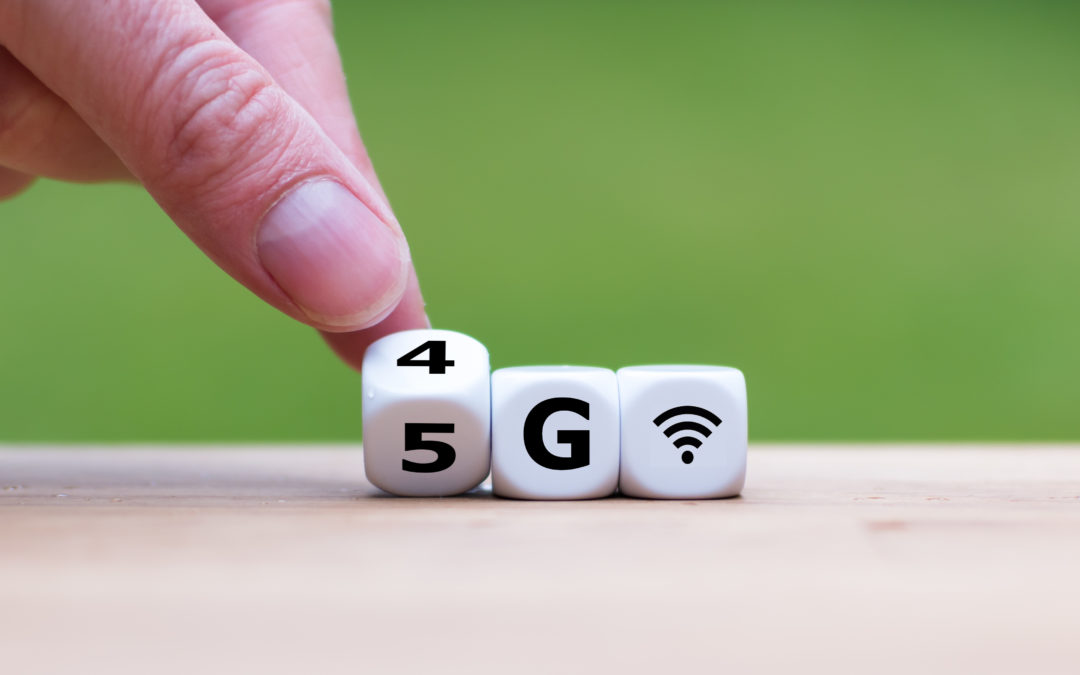Will 5G Get 6GHz?
Last year was a great year for consumers, business and the FCC as much needed licensed spectrum was auctioned or put in the spectrum pipeline, and critical decisions were made by the FCC related to opening up C-band and 5.9 GHz slices of spectrum for new uses. Those spectrum decisions in part made 2019 the year that 5G raced ahead, years ahead of schedule as the next generation of wireless spreads across the county. Thanks to Chairman Pai’s leadership, the FCC’s 2019 spectrum decisions will pay dividends for years.
In 2020, the 6GHz band of spectrum will be a focus for advancing 5G.
Spectrum is the invisible band of airwaves over which wireless communications of all sorts carry bits of information. Each slice is a frequency carrying distinct information, much like a rainbow’s bands of color. But there is a limited supply of those frequencies and too much programming on the same spectrum causes interference, destroying its value.
The current generation of wireless, 4G, ushered in the world of apps and the sharing economy. The next generation, 5G, will bring currently unimaginable new benefits. Speeds will be 5 to 20 times faster than 4G with 100-fold increase in capacity. The delay of data transfer, or latency, will reduce to 1 millisecond. This creates the opportunity for consumers to enjoy communications technologies as they see fit. Speeds in the home will finally match the broadband speeds delivered to the home. That prospect will never occur without more spectrum being made available. Fortunately, a prime piece of spectrum real estate, the 6GHz band, could be made available.
Spectrum, which the government claimed control over to manage on behalf of the people in pursuance of the “public interest,” is divided into two types, licensed and unlicensed. Each is managed differently, but both are critical to the innovation ecosystem.
Licensed spectrum is so-called because the FCC grants a license to a user for a fee and is allocated on a flexible use basis and geographic area. Spectrum auctions are delivering licensed spectrum to the highest bidder, providing income to the U.S. Treasury. Licensees are assured that harmful interference will not interrupt their transmissions.
Unlicensed spectrum has no license, allowing anyone to transmit within a certain limit of power, so long as they do not cause harmful interference to other operations and follow other FCC requirements. This freedom has allowed innovation to flourish in an “innovation sandbox” for testing new technologies, and has become a key asset for those who choose to not compete in licensed spectrum auctions. While no direct auction revenue is generated from unlicensed use for the Treasury, the result has still been an economic boon that has created additional wireless competition and provided the Wi-Fi relied on every day.
Mid-band spectrum (1GHz to 6GHz bands) is the sweet spot swath of spectrum that combines range and power in the best balance, making it attractive for a range of uses. No new mid-band unlicensed spectrum has been released in a decade so these bands are reaching exhaustion, becoming increasingly congested. Thoughtful leadership by the FCC to continue to maximize use and availability throughout the 6 GHz band will permit future generations of Wi-Fi to be deployed, providing the 5G experience in our homes and businesses, in urban and rural communities alike.
The 6 GHz band has existing licensed users, such as electric utilities, some public safety operations and electronic news over-the-air programming. But unlicensed users could use the band as well. Fortunately, the FCC’s engineers and National Telecommunications and Information Administration (NTIA) have a history of maximizing the use of spectrum, including the use of technology to help in avoiding interference. Recently they have done so in the 3.5GHz band where rules were crafted to allow licensed and unlicensed to safely co-exist with military radar, and in the 28GHz band in protecting satellite users. Moreover, unlicensed spectrum operates as a second priority in any band to limit harmful interference, and must shut down if there is a problem.
As this next generation of wireless expands, there is a role and need for both licensed and unlicensed. Getting the spectrum balance right is part of that balancing act, and doing so as soon as possible is critical to our country’ 5G leadership.


Recent Comments